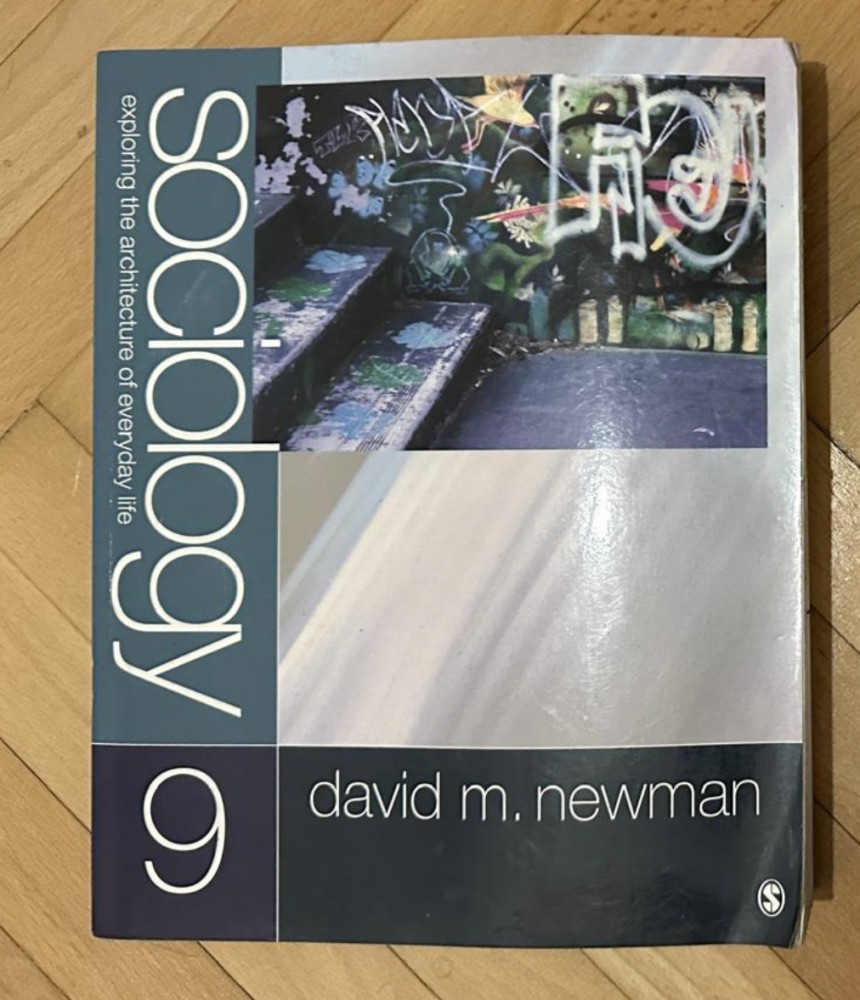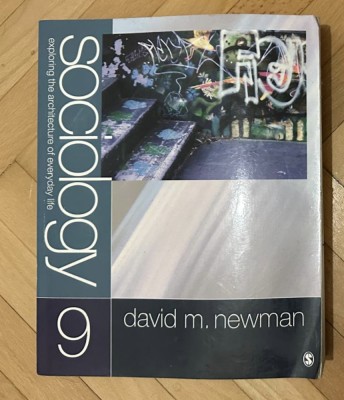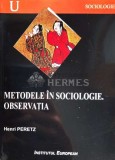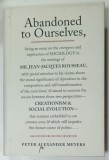Numar articol: 254354758
Pune in
vanzare un produs ca acesta
David N. Newman : Sociology, Exploring the Architecture of Everyday Life 9ed. 2012
Livrare gratuita la comenzile de 350 lei
Disponibilitate:
In stoc
1 disponibil
Vânzătorul este online


Descriere
Raporteaza produsVânzatorul este direct răspunzator pentru produsul afișat în această pagină.
Specificatii
Title
Newman + newman : Sociology,
9e.
Author
Newman, David
M.
Published
[s.l.] : Sage publications,
2012.
physical description 28 cm
700p
Contents
Machine generated contents note: pt.
I THE INDIVIDUAL AND SOCIETY1.Taking a New Look at a Familiar
WorldSociology and the
IndividualThe Insights of
SociologyThe Sociological
ImaginationEmile Durkheim: A Sociological View
of SuicideConclusionYour
TurnChapter
HighlightsKey
TermsStudent Study
Site2.Seeing and Thinking
SociologicallyHow Individuals Structure
SocietySocial Influence: The Impact of Other
People in Our Everyday LivesStanley Milgram: Ordinary People and
Cruel ActsSocietal Influence: The Effect of
Social Structure on Our Everyday
LivesStatuses and
RolesGroupsOrganizationsSocial
InstitutionsMarion Nestle: The Economics and
Politics of FoodCultureValuesMicro-Macro
Connection: Family Privacy Versus Children's
WelfareNormsSocial
Structure in a Global ContextVisual Essay: The Old Ball
GameThree Perspectives on Social
OrderThe Structural-Functionalist
PerspectiveContents note continued: The Conflict
PerspectiveSymbolic
Interactionismpt. II THE CONSTRUCTION OF SELF AND
SOCIETY3.Building Reality: The Social
Construction of KnowledgeUnderstanding the Social Construction
of RealityLaying the Foundation: The Bases of
RealityCulture and
LanguageMicro-Macro Connection: The Language
of WarSelf-Fulffilling
PropheciesFaith and Incorrigible
PropositionsHugh Mehan and Houston Wood: The
Infallible OracleBuilding the Walls: Conflict, Power,
and Social InstitutionsThe Economics of
RealityThe Politics of
RealityThe Medium Is the
MessageMoral
EntrepreneursVisual Essay: Personal
BillboardsAppreciating the Contributions of
Sociological ResearchThe Empirical Nature of Sociological
ResearchQualitative and Quantitative
ResearchTheories, Variables, and
HypothesesModes of
ResearchContents note continued:
ExperimentsField
ResearchSurveysUnobtrusive
ResearchThe Trustworthiness of Social
ResearchSamplesMicro-Macro
Connection: The WEIRDest People in the
WorldIndicatorsValues,
Interests, and Ethics in Sociological
ResearchLaud Humphreys: The Tearoom
Trade4.Building Order: Culture and
HistoryDimensions of
CultureMaterial and Nonmaterial
CultureMicro-Macro Connection: The
ChairGlobal
CultureSubcultures and
CounterculturesHistory: The "Archives" for Everyday
LivingCultural Expectations and Social
OrderMicro-Macro Connection: Can You Hear
Me Now?Social Institutions and Cultural
NormsMicro-Macro Connection: I've Got a
FeelingNorms and
SanctionsCultural Relativism and
EthnocentrismAbhijit Banerjee and Esther Duflo:
The Economic Lives of Poor PeopleContents note continued: Cultural
Variation and Everyday ExperienceHealth and
IllnessVisual Essay: Funeral Rituals in the
NetherlandsThe
Sexes5.Building Identity:
SocializationGenes, Social Structure, and the
Construction of Human BeingsSocialization: Becoming Who We
AreThe Acquisition of
SelfThe Differentiation of
SelfLanguage Acquisition and the
Looking-Glass SelfThe Development of Role
TakingResocializationSpencer
Cahill: The Professional Resocialization of Funeral
DirectorsThe Self in a Cultural
ContextSocialization and Stratification:
Growing Up With InequalitySocial
ClassRace and
EthnicityGenderMicro-Macro
Connection: Girls' Toys and Boys'
ToysInstitutions and
SocializationEducationVisual
Essay: Becoming a MarinerReligionMass
MediaContents note continued: Student
Study Site6.Supporting Identity: The
Presentation of SelfForming Impressions of
OthersSocial Group
MembershipPhysical
AppearanceMicro-Macro Connection: Sizing People
UpVerbal and Nonverbal
ExpressionManaging
ImpressionsDramaturgy: Actors on a Social
StageFront Stage and Back
StagePeter Ubel: Elevator Talk Among
Doctors and NursesPropsImage
MakingThe Alteration of
AppearancePolitical
PortraitsSocial Influences on Impression
ManagementElijah Anderson:
StreetwiseSocial
StatusCollective Impression
ManagementMismanaging Impressions: Spoiled
IdentitiesEmbarrassmentRemedies
for Spoiled IdentitiesStigma7.Building
Social Relationships: Intimacy and
FamiliesLife With
OthersMicro-Macro Connection: That's What
(Facebook) Friends Are ForContents note continued: Social
Diversity and Intimate ChoicesExogamyEndogamyReligious
EndogamyRacial and Ethnic
EndogamyVisual Essay: The Blending of
America: Mixed RaceSocial Class
EndogamyFamily
LifeDefining
FamilyHistorical Trends in Family
LifeTrends in Family
StructureTrends in Household
SizeTrends in
DivorceCultural Variation in Intimacy and
FamilyFamily and Social
StructureHow Other Institutions Influence
FamilyThe Influence of Law and
PoliticsThe Influence of
ReligionThe Influence of
EconomicsMicro-Macro Connection: Dual-Earner
ParentsHow Social Diversity Influences
FamilyMary Pattillo-McCoy: Privilege and
Peril in Middle-Class Black
FamiliesFamily
ChallengesDivorceThe
Normalization of DivorceChildren, Divorce, and Single
ParentingRemarriage and
StepfamiliesFamily
ViolenceIntimate-Partner
ViolenceChild
AbuseIntimate Violence in a Cultural
ContextContents note continued: Personal and
Institutional Responses to Intimate
Violence8.Constructing Difference: Social
DevianceDefining
DevianceAbsolutist Definitions of
DevianceRelativist Definitions of
DevianceThe Elements of
DevianceVisual Essay: A Culture of
TrampsMicro-Macro Connection: Sexual Abuse
and the ClergyExplaining Deviant
BehaviorDeterring
DevianceLabeling
DeviantsNancy Herman: Becoming an
Ex-CrazyLinking Power, Deviance, and Social
ControlThe Criminalization of
DevianceThe Social Reality of
CrimeCorporate and White Collar
CrimeThe Menace of "Illegal"
DrugsThe Medicalization of
DevianceIndividualizing Complex Social
IssuesMicro-Macro Connection: The
Pharmaceutical PersonalityDepoliticizing
DevianceContents note continued: pt. III
SOCIAL STRUCTURE, INSTITUTIONS, AND EVERYDAY
LIFE9.The Structure of Society:
Organizations, Social Institutions, and
GlobalizationSocial Structure and Everyday
LifeMicro-Macro Connection: Social
Structure and CatastropheSocial Dilemmas: Individual Interests
and Structural NeedsThe Tragedy of the
CommonsThe Free-Rider
ProblemSolutions to Social
DilemmasThe Structure of Formal
OrganizationsBureaucracies: Playing by the
RulesGeorge Ritzer: The McDonaldization of
SocietyThe Hierarchical Makeup of
OrganizationsThe Upper
EchelonsThe Middle
GroundThe Lower
EchelonsThe Construction of Organizational
RealityOrganizations and
InstitutionsOrganizational Networks Within
InstitutionsMicro-Macro Connection: The U.S.
Health Care SystemInstitutional Pressures Toward
SimilarityGlobalization and Social
InstitutionsEconomicsVisual
Essay: The Trail of the TomatoContents note continued:
Religion10.The Architecture of
Stratification: Social Class and
InequalityStratification
SystemsSlaveryMicro-Macro
Connection: Buying and Selling
HumansCaste
SystemsEstate
SystemsSocial Class
SystemsSociological Perspectives on
StratificationThe Structural-Functionalist View of
StratificationThe Conflict View of
StratificationThe Marxian Class
ModelNeo-Marxist Models of
StratificationWeber's Model of
StratificationClass Inequality in the United
StatesClass and Everyday
LifeClass
DistinctionsThe Upper
ClassThe Middle
ClassThe Working
ClassMike Rose: The Mind at
WorkThe
PoorWhat Poverty Means in the United
StatesThe Poverty
LineThe
Near-PoorThe Poverty
RateThe Consequences of
PovertyPoverty and
HealthPoverty and
EducationOut on the
StreetsContents note continued: Why Poverty
PersistsEnduring Disparities in Income and
WealthThe Social "Benefits" of
PovertyThe Ideology of Competitive
IndividualismThe Culture of
PovertyGlobal Development and
InequalityThe Global Economic
GapMicro-Macro Connection: The Global
Health DivideExplanations for Global
StratificationGlobal Financial
OrganizationsMultinational
Corporations11.The Architecture of Inequality:
Race and EthnicityRace and Ethnicity: More Than Just
BiologyMicro-Macro Connection: Why Isn't
Barack Obama White?Histories of Oppression and
InequalityNative
AmericansVisual Essay: "Civilizing" the
IndiansLatino/asAfrican
AmericansAsian
AmericansMuslim
AmericansRacial and Ethnic
RelationsPersonal
RacismStereotypesPrejudice
and DiscriminationThe Privilege of Having No
ColorContents note continued: Class, Race,
and DiscriminationQuiet
RacismJoe Feagin and Eileen O'Brien:
Wealthy White Men on RaceThe Cultural Ideology of
RacismRacism in
LanguageThe Myth of Innate Racial
InferiorityMicro-Macro Connection: Racial
Superiority and the Dominant Black
AthleteInstitutional Racism: Injustice Built
Into the SystemMicro-Macro Connection: A House
Divided-Residential
DiscriminationRacial Inequality in the Economic
SystemRacial Inequality in the Health Care
SystemRacial Inequality in the Educational
SystemRemedies for Institutional Racism:
Affirmative ActionGlobal Perspectives on
Racism12.The Architecture of Inequality:
Sex and GenderSexism at the Personal
LevelSexism and Social
InteractionLaura Miller: Gender, Power, and
Harassment in the MilitarySexual
OrientationViolence Against
WomenContents note continued: Rape as a
Means of Social ControlVictim
BlamingThe Ideology of Sexism: Biology as
DestinyInstitutions and Gender
InequalityMasculinized
InstitutionsGender Inequality in Health and
Health CareGender Inequality in the
MediaMicro-Macro Connection: Can Media
Images Be Hazardous to Your
Health?Gender
Inequality in FamiliesGender Inequality in
EducationGender Inequality in the
EconomySegregation in the
WorkplaceThe Wage
GapThe Global Devaluation of
Women13.Demographic Dynamics: Population
TrendsThe Influence of Birth
CohortsBaby
BoomersGeneration
XThe
Millennium GenerationDemographic
DynamicsPopulation
GrowthGlobal Imbalances in Population
GrowthPolitics, Culture, and Population
GrowthAge
StructureGeographic
DistributionMigration Within a
CountryContents note continued: Migration
From One Country to AnotherPopulation Trends in the United
StatesImmigration and the Changing Face of
the United StatesThe Immigrant
SurgeSocial Responses to
ImmigrantsMicro-Macro Connection: The Peculiar
Politics of ImmigrationVisual Essay: Immigrant
NationThe "Graying" of the United
States14.Architects of Change:
Reconstructing SocietySocial
ChangeMicro-Macro Connection: Parental
Pressure in Childhood SportsThe Speed of Social
ChangeCauses of Social
ChangeEnvironmental and Population
PressuresCultural and Technological
InnovationMicro-Macro Connection: Technology
and the Erosion of PrivacyDiffusion of Technologies and
Cultural PracticesSocial
MovementsTypes of Social
MovementsElements of Social
MovementsIdeologyVisual
Essay: Portraits of GriefRising
ExpectationsContents note continued: Resource
MobilizationBureaucratizationPolitical
Opportunity StructureThe Sociological Imagination
RevisitedConclusion and
Farewellpt. I THE INDIVIDUAL AND
SOCIETYch. 1 Taking a New Look at a Familiar
WorldReading 1.1 The Sociological
Imagination / C. Wright MillsReading 1.2 Invitation to Sociology /
Peter BergerReading 1.3 The My Lai Massacre: A
Military Crime of Obedience / V. Lee
Hamiltonch. 2 Seeing and Thinking
SociologicallyReading 2.1 The Metropolis and Mental
Life / Georg SimmelReading 2.2 Gift and Exchange /
Zygmunt BaumanReading 2.3 Culture of Fear / Barry
Glassnerch. 3 Building Reality: The Social
Construction of KnowledgeReading 3.1 Concepts, Indicators, and
Reality / Earl BabbieReading 3.2 Missing Numbers / Joel
Bestch. 4 Building Order: Culture and
HistoryContents note continued: Reading 4.1
Body Ritual among the Nacirema / Horace
MinerReading 4.2 The Melting Pot / Anne
FadimanReading 4.3 McDonald's in Hong Kong:
Consumerism, Dietary Change, and the Rise of a Children's Culture /
James L. Watsonch. 5 Building Identity:
SocializationReading 5.1 Life as the Maid's
Daughter: An Exploration of the Everyday Boundaries of Race, Class,
and Gender / Mary RomeroReading 5.2 The Making of Culture,
Identity, and Ethnicity Among Asian American Youth / Jennifer
LeeReading 5.3 Working `the Code': On
Girls, Gender, and Inner-City Violence / Nikki
Jonesch. 6 Supporting Identity: The
Presentation of SelfReading 6.1 The Presentation of Self
in Everyday Life: Selections / Erving
GoffmanReading 6.2 Public Identities:
Managing Race in Public Spaces / Karyn
LacyReading 6.3 The Girl Hunt: Urban
Nightlife and the Performance of Masculinity as Collective Activity
/ David GrazianContents note continued: ch. 7
Building Social Relationships: Intimacy and
FamilyReading 7.1 The Radical Idea of
Marrying for Love / Stephanie
CoontzReading 7.2 Gay Parenthood and the
End of Paternity as We Knew It / Judith
StaceyReading 7.3 Covenant Marriage:
Reflexivity and Retrenchment in the Politics of Intimacy / Dwight
Feech. 8 Constructing Difference: Social
DevianceReading 8.1 Watching the Canary /
Gerald TorresReading 8.2 Healing (Disorderly)
Desire: Medical-Therapeutic Regulation of Sexuality / P.J.
McGannReading 8.3 Patients, "Potheads," and
Dying to Get High / Wendy Chapkispt. III SOCIAL STRUCTURE,
INSTITUTIONS, AND EVERYDAY LIFEch. 9 The Structure of Society:
Organizations and Social
InstitutionsReading 9.1 These Dark Satanic Mills
/ William GreiderReading 9.2 The Smile Factory: Work
at Disneyland / John Van MaanenReading 9.3 Creating Consumers:
Freaks, Geeks, and Cool Kids / Murry
MilnerContents note continued: ch. 10 The
Architecture of Stratification: Social Class and
InequalityReading 10.1 Making Class Invisible /
Gregory MantsiosReading 10.2 The Compassion Gap in
American Poverty Policy / Imrul
MazidReading 10.3 Branded With Infamy:
Inscriptions of Poverty and Class in America / Vivyan
Adairch. 11 The Architecture of
Inequality: Race and EthnicityReading 11.1 Racial and Ethnic
Formation / Howard WinantReading 11.2 Optional Ethnicities:
For Whites Only? / Mary C. WatersReading 11.3 Silent Racism: Passivity
in Well-Meaning White People / Barbara
Trepagnierch. 12 The Architecture of
Inequality: Sex and GenderReading 12.1 Black Women and a New
Definition of Womanhood / Bart
LandryReading 12.2 Still a Man's World: Men
Who Do "Women's Work" / Christine L.
WilliamsReading 12.3 New Biomedical
Technologies, New Scripts, New Genders / Eve
Shapiroch. 13 Global Dynamics and Population
Demographic TrendsContents note continued: Reading 13.1
Age-Segregation in Later Life: An Examination of Personal Networks
/ Jenny de Jong GierveldReading 13.2 Love and Gold / Arlie
Russell HochschildReading 13.3 Cyberbrides and Global
Imaginaries: Mexican Women's Turn from the National to the Foreign
/ Felicity Schaeffer-Grabielch. 14 The Architects of Change:
Reconstructing SocietyReading 14.1 Muslim American
Immigrants After 9/11: The Struggle for Civil Rights / Pierrette
Hondagneu-SoteloReading 14.2 The Seattle Solidarity
Network: A New Approach to Working Class Social Movements / Walter
WinslowReading 14.3 "Aqui estamos y no nos
vamos!" Global Capital and Immigrant Rights / William I.
Robinson.
Language
English
Galerie foto
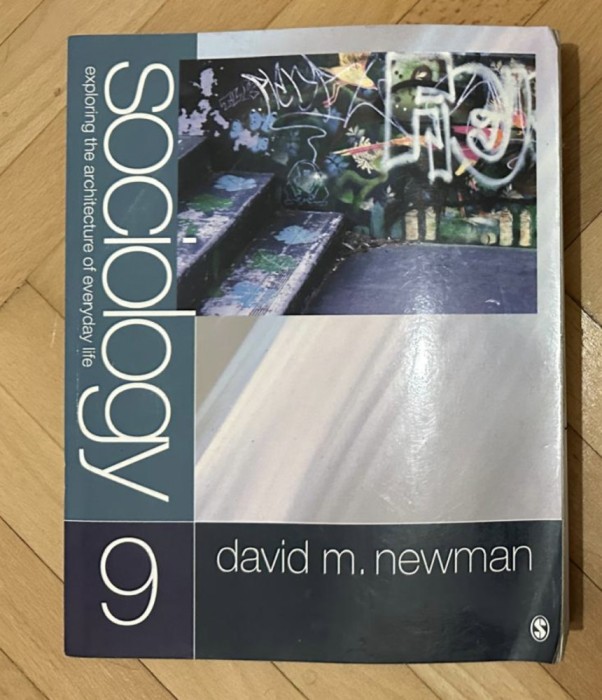
Modalitati de livrare si plata
LIVRARE
In Bucuresti
-
- Predare personala - Gara de Nord orele 17-18 in max. 1 zi lucratoare
-
- Prin Curier rapid - 16 Lei in max. 2 zile lucratoare
In Romania:
-
- Prin Curier rapid - 16 Lei in max. 2 zile lucratoare
PLATA
- - La predare
- - Ramburs
- - Avans
Politica de retur
- - Produsul nu se poate returna.
Optiunea ta
David N. Newman : Sociology, Exploring the Architecture of Everyday Life 9ed. 2012
